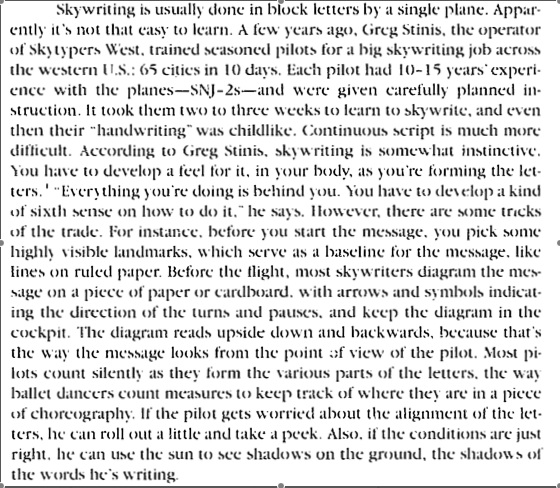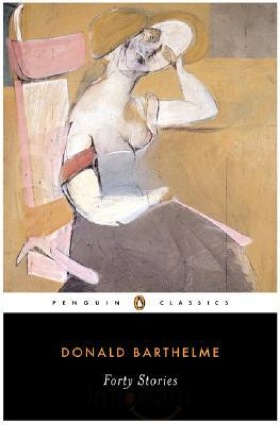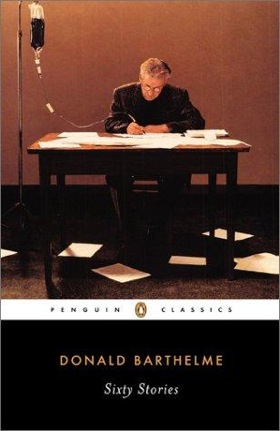This Week I Began Studying The Posthuman

What is the posthuman? Think of it as a point of view characterized by the following assumptions…First, the posthuman view privileges informational pattern over material instantiation, so that embodiment in a biological substrate is seen as an accident of history rather than an inevitability of life. Second, the posthuman view considers consciousness, regarded as the seat of human identity in the Western tradition long before Descartes thought he was a mind thinking, as an epiphenomenon, as an evolutionary upstart trying to claim that it is the whole show when in actuality it is only a minor sideshow. Third, the posthuman view thinks of the body as the original prosthesis we all learn to manipulate, so that extending or replacing the body with other prostheses becomes a continuation of a process that began before we were born. Fourth, and most important, by these and other means, the posthuman view configures human being so that it can be seamlessly articulated with intelligent machines. In the posthuman, there are no essential differences or absolute demarcations between bodily existence and computer simulation, cybernetic mechanism and biological organism, robot technology and human goals.
–from N. Katherine Hayles’s How We Became Posthuman: Virtual Bodies in Cybernetics, Literature, and Informatics. (Chicago: University of Chicago press, 1999)

“A cyborg is a cybernetic organism, a hybrid of machine and organism, a creature of social reality as well as a creature of fiction…The cyborg is a matter of fiction and lived experience that changes what counts as women’s experience in the late twentieth century…Though both are bound in the spiral dance, I would rather be a cyborg than a goddess.”
–from Donna Haraway’s “A Cyborg Manifesto: Science, Technology, and Socialist-Feminism in the Late Twentieth Century,” in Simians, Cyborgs and Women: The Reinvention of Nature (New York: Routledge, 1991)
Paige Williams, a journalist, wrote a fascinating story about Dolly Freed–author of the off-grid classic Possum Living which has been reissued by Tin House this month. Paige self-published the story after many rejections and is accepting donations. I chipped in. I’m sure you’ll want to, too. ::: Tom McCarthy, author of remainder, on David Lynch’s films. Excellent thoughts. ::: And a half-good, half-Wall-Street-Journal Wall Street Journal piece on the state of the slush pile.
“You have to develop a feel for it, in your body, as you’re feeling the letters. ‘Everything you’re doing is behind you.'”
 Dreaming of writing a breezy pocketbook bestseller called HOW TO HAVE FUN WITH CONTEMPORARY NONSENSE, I had my dream thankfully interrupted by the discovery of the mighty Ron Padgett’s Creative Reading (1997), which is sort of a better, richer, funnier, and broader version of my idea, involving a lot less instances of the phrase “Derridian play as model for invisible friendship” (yeah, I know, sorry in advance, hypothetical sorry, snow sorry, slur saw reed) and a lot more about how strange and terrific all reading can be. And how meeting up with that fact makes you a better reader and enables you to have fun with all kinds of reading, even the nonsense. Best of all, Padgett’s book is available for free by clicking the link above. It includes lots of great, clear and easy-gaited strategies for messing around with the stuff you read, which makes it an ideal text for teaching and/or quoting in the presence of family members who have no idea what the fuck you’re talking about, ever. It’s full of poems, tidbits, cut-ups, cool stuff. It’s basically about letting your mind be playful and less scared. Less scared of nonsense and of the nonsense at the root of language’s conceit, the ticklish arbitrariness of all abstract communication. Here is a blurb:
Dreaming of writing a breezy pocketbook bestseller called HOW TO HAVE FUN WITH CONTEMPORARY NONSENSE, I had my dream thankfully interrupted by the discovery of the mighty Ron Padgett’s Creative Reading (1997), which is sort of a better, richer, funnier, and broader version of my idea, involving a lot less instances of the phrase “Derridian play as model for invisible friendship” (yeah, I know, sorry in advance, hypothetical sorry, snow sorry, slur saw reed) and a lot more about how strange and terrific all reading can be. And how meeting up with that fact makes you a better reader and enables you to have fun with all kinds of reading, even the nonsense. Best of all, Padgett’s book is available for free by clicking the link above. It includes lots of great, clear and easy-gaited strategies for messing around with the stuff you read, which makes it an ideal text for teaching and/or quoting in the presence of family members who have no idea what the fuck you’re talking about, ever. It’s full of poems, tidbits, cut-ups, cool stuff. It’s basically about letting your mind be playful and less scared. Less scared of nonsense and of the nonsense at the root of language’s conceit, the ticklish arbitrariness of all abstract communication. Here is a blurb:
After a brief discussion of common reading errors that can be used creatively, the central chapter of the book, “Creative Reading Techniques,” suggests exercises that make reading an adventure, highly interactive, and imaginative, using both classic and modern literature in ways that blend reading and writing. Along the way, among other things, the book talks about the influence of typography, movies, and television on reading, the joys of misunderstanding, the music of Spike Jones, skywriting, Dada poetry, reading in dreams, the way words sound in the reader’s head, and the setting in which text is read.
There’s also an awesome appendix about skywriting. Tell me if this doesn’t remind you of anything:
Friday Fuck Books, Let’s Take Us Some Teeth
httpv://www.youtube.com/watch?v=n6bK5EPdQ1g
httpv://www.youtube.com/watch?v=toSWqyvpkYo
httpv://www.youtube.com/watch?v=qY1lHDXw6GM
Isaiah Toothtaker‘s record is free HERE. The first track samples Werner Herzog.
This year-old “Quarterlife Crisis” meme article just stressed me the fuck out. Even though the whole “I’m in my 20s and I don’t know what I want to do with my life” thing doesn’t quite apply to obsessive writer types, does it? The problem for us is we know exactly what we want to do and we spend all our time doing it because we like to do it, but it’s not exactly a viable “career.” So for us the question is… what the fuck is going to happen to us when we get old? Where are you going to be when you’re old? Publishing flash fiction downloaded directly into the brains of ten people worldwide?
translation mania
I’ve been reading a lot of Aeschylus lately, doing research, or something like that. Well, it started out as research, then, I got caught up in reading, as often happens. Then, I got caught up in how different translations can be.
Check this out. Here, I offer five translations of the same passage, each one equally lovely, each one equally amiss:
Peer Review: “A Common Pornography” by Kevin Sampsell
 I don’t know if anyone else on this site is planning to write about my pressmate Kevin Sampsell’s new book–I hope someone is–but I feel like sharing some thoughts about it, so here goes. The main thing that strikes me is how effortless and propulsive the reading experience is. The package containing A Common Pornography (and a galley of Dennis Cooper’s Smothered in Hugs–it was like Christmas all over again!) arrived this afternoon around five, and yet, somehow, here it is a quarter after ten and I’m about three quarters through it. I read it sitting in my desk chair. I read it on the subway. I read it in the checkout line at Trader Joe’s. I read it on my couch. If I hadn’t put it down to write this blog post about it, I’d be reading it now.
I don’t know if anyone else on this site is planning to write about my pressmate Kevin Sampsell’s new book–I hope someone is–but I feel like sharing some thoughts about it, so here goes. The main thing that strikes me is how effortless and propulsive the reading experience is. The package containing A Common Pornography (and a galley of Dennis Cooper’s Smothered in Hugs–it was like Christmas all over again!) arrived this afternoon around five, and yet, somehow, here it is a quarter after ten and I’m about three quarters through it. I read it sitting in my desk chair. I read it on the subway. I read it in the checkout line at Trader Joe’s. I read it on my couch. If I hadn’t put it down to write this blog post about it, I’d be reading it now.
Now, I know that Kevin is–like me–a Richard Brautigan fan, and I think there’s a very Brautigan-y energy at work in this book. Not a Brautigan tone, mind you–Kevin’s book isn’t emo or surrealistic–but here, as in a Brautigan, the chapters are very short, typically a page or two at most, and tend to be anchored by a single image or idea. The book doesn’t demand so much as suggest your attention–hey, you wanna hear a story? Sure. The subject matter (the author’s superlatively deranged upbringing) is sometimes dark (and/or gross) but Sampsell doesn’t plea for your sympathy, he doesn’t go for pointless shocks, and he doesn’t attempt some sort of showy “defiance” or “reclamation” or whatever. He’s just this guy remembering stuff that he did or that happened to him, or to people he knew, and sort of thinking about how it was all maybe a little weirder than he thought it was at the time. Some of it’s funny, and some of it’s touching, and some of it’s sad–and a lot of it is two or more of these things at once–but I think what it really succeeds at doing is creating an atmosphere that encompasses all of those states without forcing the reader to choose one, and that too for me is very Brautigan.
So anyway, that’s my first reaction to Kevin’s book. I’m excited to see him in February, because Harper has us scheduled to do a handful of events together–we’re doing a night in Boston (2/17) and then the following two nights in NYC, and hopefully I’ll be out to see him in Portland sometime later this spring. Want to know how we met? Okay, I’ll tell you the story. We met because right before I moved to Portland, Oregon from NYC in early ’05, I found a copy of Susannah Breslin’s You’re A Bad Man Aren’t You? which he had published through Future Tense, on the bookshelf at St. Mark’s. So I emailed him to say that I was moving to his town and we should get together. He was, I think, looking for an intern, and I know that I was looking for someone to publish the mess of short stories in my backpack. So we had lunch one day near Powell’s. There are a number of ways this meeting might have ended poorly, but instead what happened was I interviewed him for Bookslut, and we’ve been friends ever since. You can read that interview here. Fun interview fact: Kevin Sampsell was the first person I ever heard mention the following names–Sam Lipsyte, Gary Lutz, Gordon Lish, Diane Williams, Amy Hempel, Tao Lin. Not bad, right?
January 15th, 2010 / 12:12 am
Pardon the sort of self-promotion but PANK is contributing all proceeds from all sales (between now and 2/13/10) of our chapbook, How to Take Yourself Apart by Aaron Burch, and PANK 4 to the Red Cross and Médecins Sans Frontières. If you want to acquire some great reading material and make a generous contribution to organizations who will put your money to good use in Haiti, consider participating. Order here. Both ship next week.



